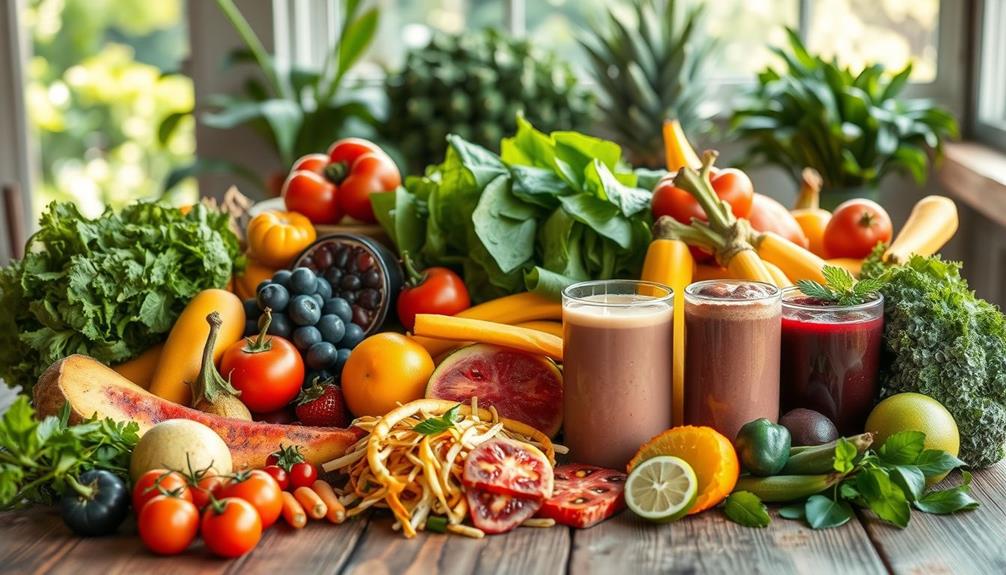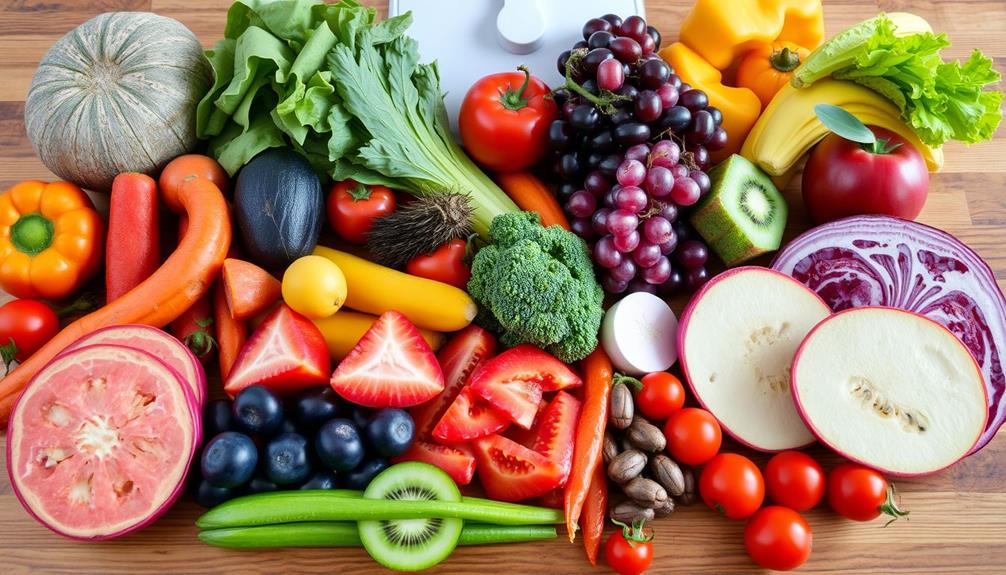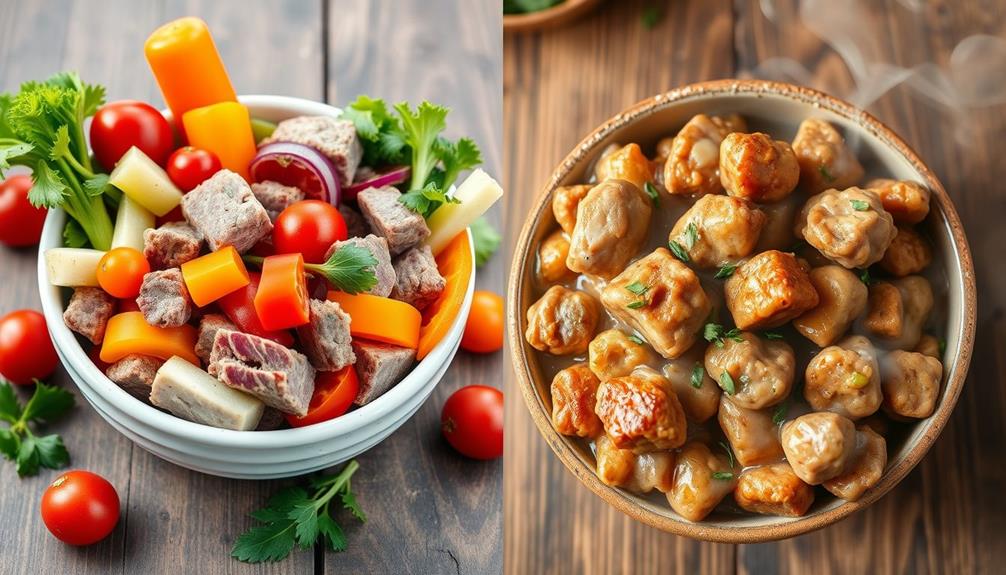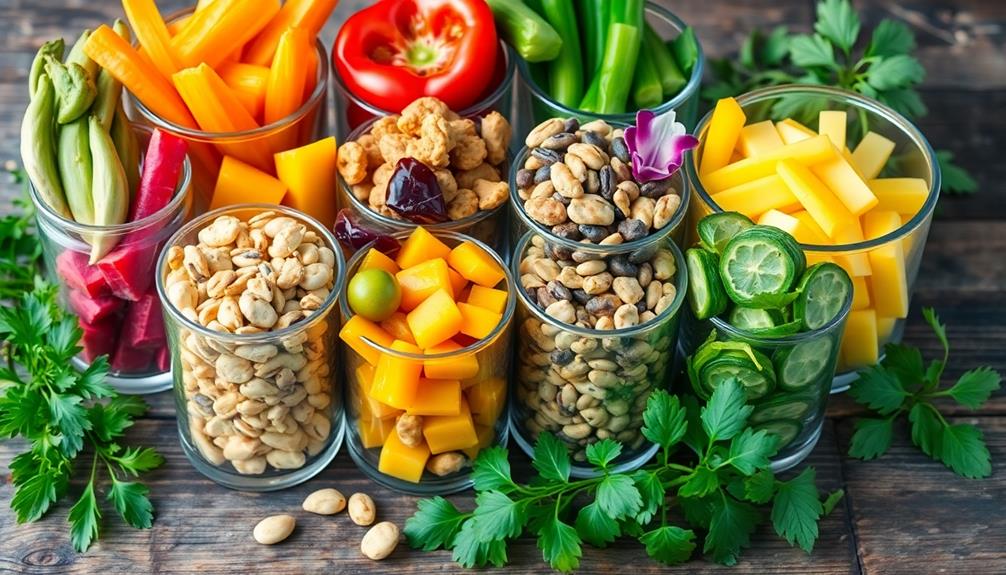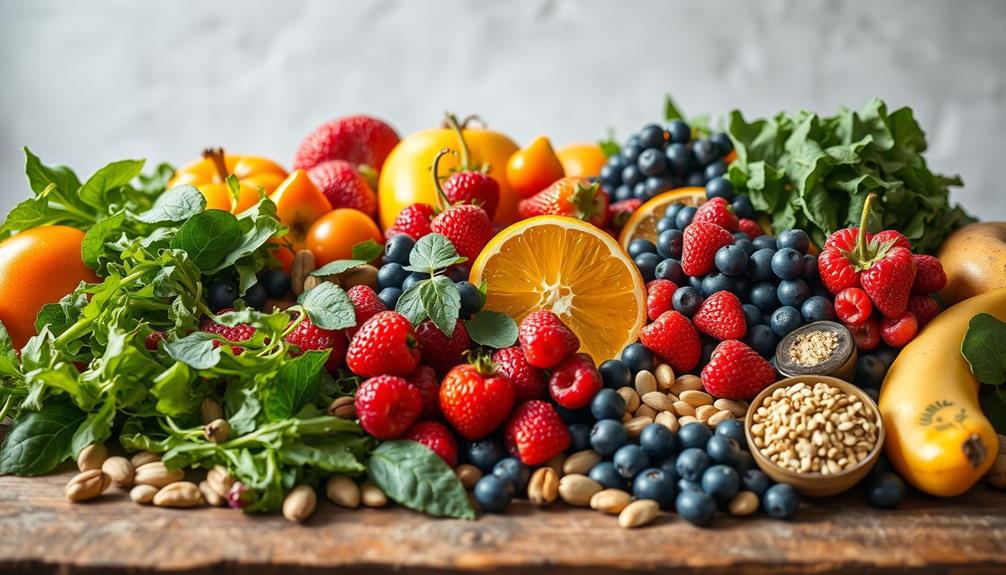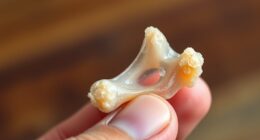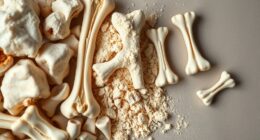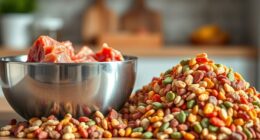Raw food diets focus on unprocessed, uncooked foods, which can boost your nutrient intake and enhance digestive health. You'll enjoy more vitamins, minerals, and antioxidants, potentially lowering your risk of chronic diseases like heart disease and diabetes. However, it's crucial to balance your meals carefully, since these diets can lead to nutritional deficiencies if not well-planned. While you may experience benefits like increased energy and weight loss initially, certain risks, like protein insufficiency and digestive challenges, need consideration. There's much more to discover about how a raw food diet can fit into your lifestyle and health goals.
Key Takeaways
- Raw foods retain higher levels of vitamins, minerals, and antioxidants, promoting better skin health and increased energy levels.
- High fiber content in raw diets supports digestive health and aids in weight management, contributing to a balanced microbiome.
- Following a raw food diet may lower the risk of chronic diseases like heart disease and diabetes when properly planned.
- Raw diets can enhance nutrient intake from fruits and vegetables, improving overall nutritional health, but careful planning is essential to avoid deficiencies.
- Incorporating both raw and cooked foods can provide a more balanced diet, maximizing nutrient absorption and minimizing health risks.
Overview of Raw Food Diet
The raw food diet centers on eating unprocessed and uncooked foods, allowing you to enjoy the natural flavors and nutrients found in fresh fruits, vegetables, nuts, seeds, and sprouted grains. This approach emphasizes preparing foods using methods like blending, juicing, and dehydrating, without exceeding temperatures of 104-118°F (40-48°C). By doing so, you preserve the natural enzymes and nutrients often lost in cooked food.
Additionally, consuming raw foods, such as celery juice, can provide anti-inflammatory properties and promote hydration, which are beneficial for overall health. This diet also encourages you to reflect on the potential effects of certain foods, as some raw vegetables may cause digestive issues if not consumed in moderation, such as beets with high oxalate levels nutritional benefits of vegetables.
Originating in the 1800s with Dr. Maximilian Bircher-Benner, the raw food diet encourages you to consume at least 75% raw foods, focusing on high-quality, organic produce while avoiding processed foods.
You'll find three main types of raw food diets: the raw vegan diet, which excludes all animal products; the raw vegetarian diet, which includes raw dairy and eggs; and the raw omnivorous diet, allowing raw animal products.
Adopting a raw food diet can enhance your nutrient intake, and many proponents believe it contributes to overall well-being. This lifestyle encourages you to explore diverse, nutrient-rich foods while steering clear of refined and pasteurized items, ultimately leading to a healthier relationship with what you eat.
Health Benefits of Raw Foods

Raw foods pack a powerful punch when it comes to health benefits. These nutrient-rich options are loaded with vitamins, minerals, and antioxidants that can enhance your skin health and boost your energy levels.
Incorporating more raw foods into your diet may lead to better digestive health, thanks to their high fiber content. Fiber not only helps regulate bowel movements but also promotes satiety, making it easier for you to achieve your weight loss goals. Additionally, raw foods like fruits and vegetables are known to support digestive health with their high water content, which can further aid in hydration.
Moreover, raw food diets are linked to a lower risk of chronic diseases, including heart disease and diabetes, because they emphasize plant-based foods packed with essential nutrients. By consuming raw foods, you may also support beneficial gut bacteria, contributing to improved gut health and a balanced microbiome.
While the preservation of natural enzymes in raw foods is thought to aid digestion, this claim remains debated among experts.
Nevertheless, the overall health benefits of raw foods are significant, making them a valuable addition to your diet. Embrace the vibrant world of raw foods, and you might just discover an easier path to a healthier life. Incorporating more raw food diet components into your meals can not only boost your nutrient intake, but also support your digestive system and overall well-being. From crisp salads to refreshing smoothies, there are countless delicious ways to enjoy the benefits of raw foods in your daily diet. By experimenting with new recipes and embracing a variety of raw food ingredients, you can nourish your body with the vitamins, minerals, and antioxidants it needs to thrive.
Nutritional Risks and Deficiencies
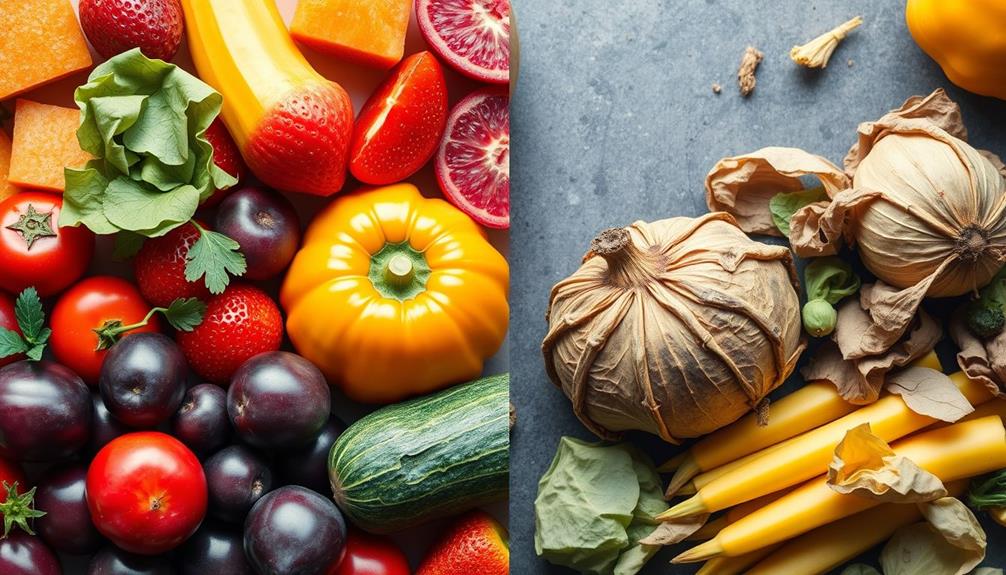
Adopting a raw food diet can present significant nutritional risks and potential deficiencies that you should be aware of. One major concern is the lack of essential nutrients, such as vitamin B12, vitamin D, iron, and omega-3 fatty acids, which are mainly found in animal products. If you're relying solely on plant-based sources, careful planning is essential to avoid vitamin deficiencies.
Additionally, the exclusion of certain food groups can lead to nutritional imbalances, which may increase the likelihood of developing conditions such as gout and other health issues.
Moreover, long-term adherence to raw food diets can lead to inadequate protein intake. This can impact your muscle health and bone density since many raw plant foods are lower in protein.
Additionally, the high fiber content in these diets may cause digestive issues like gas and bloating, especially if you ramp up your fiber intake too quickly.
Exclusion of certain food groups can lead to nutritional imbalances, compromising your overall health. Symptoms such as fatigue and a weakened immune system can arise from these deficiencies.
As a result, regular monitoring of nutrient levels is essential for anyone on a long-term raw food diet to prevent severe deficiencies and maintain ideal health.
Impact on Weight and Hormones
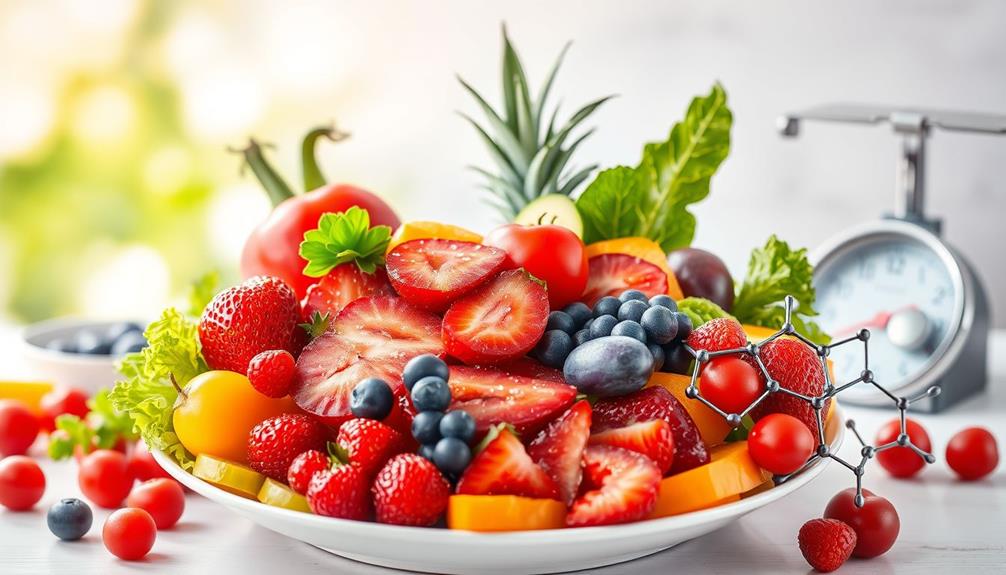
Frequently, individuals on a raw food diet find it challenging to maintain a healthy weight due to the extreme caloric restrictions inherent in this lifestyle.
Studies show that men average 14.7% and women 25% below normal weight. This struggle often results from nutritional deficiencies, which can lead to amenorrhea, with one-third of raw dieters experiencing this condition.
The effects of such dietary choices can also resonate with mental health, as individuals with unstable eating patterns may experience heightened emotional responses, similar to those seen in BPD dynamics.
Consider the following impacts of a raw food diet on weight and hormones:
- Hormonal Imbalance: Excessive dietary restrictions disrupt hormonal balance, causing weight fluctuations.
- Fertility Issues: Drastic weight loss can negatively affect menstrual health and fertility.
- Digestive Challenges: High fiber content may aid in weight management, but rapid increases in fiber intake can lead to digestive issues.
Maintaining a healthy weight on a raw food diet is complex.
While the fiber content can offer some benefits, the associated caloric restrictions and potential nutritional deficiencies can have far-reaching effects on your overall health, particularly regarding hormonal balance and fertility.
It's crucial to approach this diet with awareness of these challenges to support your well-being effectively.
Food Safety Considerations
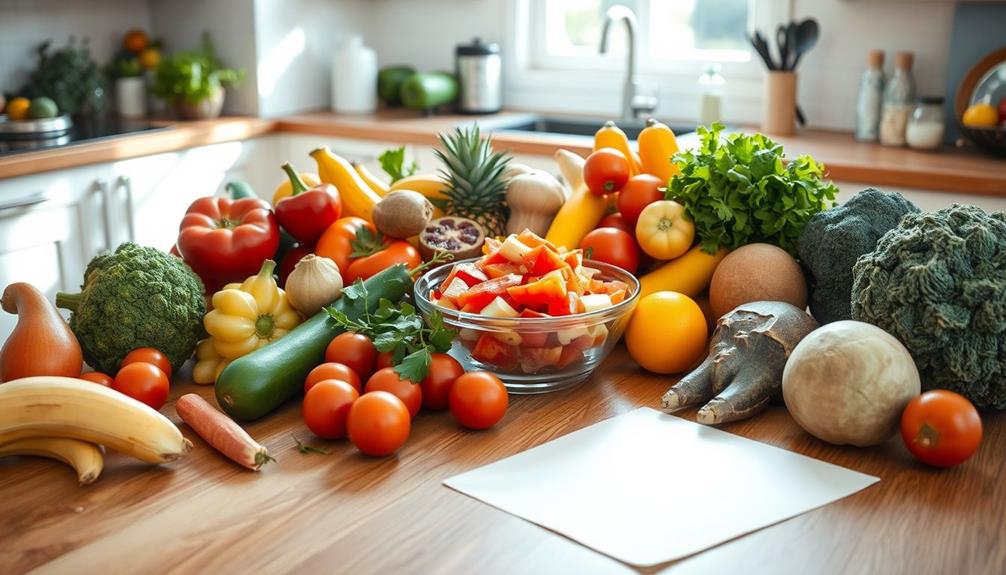
A notable concern when choosing a raw food diet is food safety, as consuming uncooked foods can elevate your risk of exposure to harmful pathogens like E. coli, listeria, and salmonella. The USDA emphasizes the importance of thorough washing of raw fruits and vegetables to reduce bacterial risks, and it recommends avoiding raw animal products due to potential foodborne illnesses.
Additionally, understanding the financial considerations for elderly care can help caregivers make informed decisions about nutritional needs, including incorporating safe raw food options.
Certain raw foods, such as kidney beans and raw sprouts, can contain natural toxins that pose serious health risks when consumed uncooked. As a result, careful food selection is essential. If you're pregnant, have young children, are a senior, or are among immunocompromised individuals, it's especially important to exercise caution. A raw food diet may not be suitable for you due to your heightened susceptibility to foodborne illnesses.
To minimize these risks, implement proper food safety practices by sourcing organic and high-quality ingredients. This approach can greatly lower the chances of contamination and help you enjoy the benefits of raw foods while keeping your health in check.
Always prioritize safety to make your raw food journey a healthier experience.
Types of Raw Food Diets
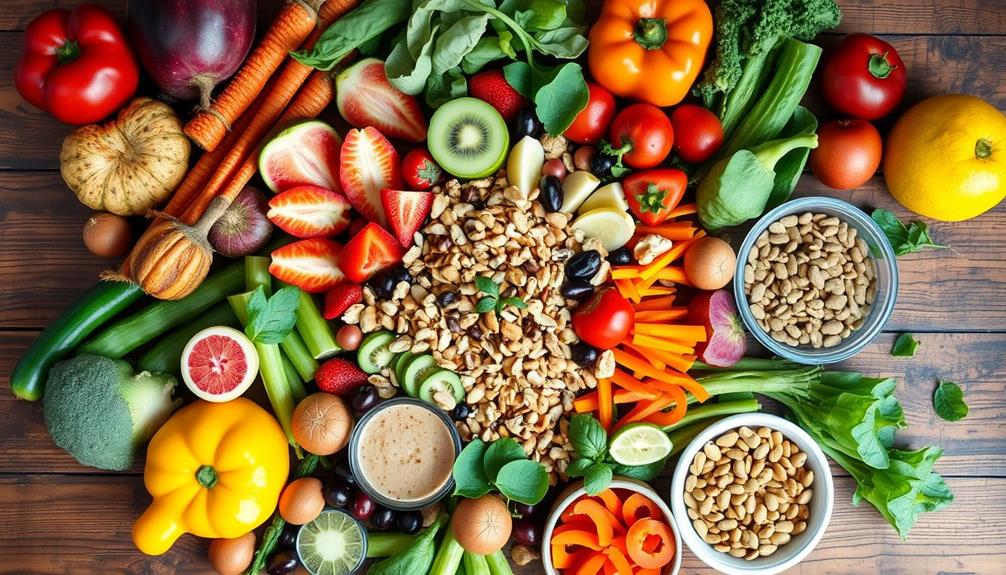
Exploring the various types of raw food diets can help you find one that fits your lifestyle and nutritional goals. Each diet can be enhanced by incorporating natural remedies, like essential oils, which may offer additional health benefits.
Here are three primary types you might consider:
- Raw Veganism: This diet excludes all animal products, focusing solely on plant-based foods like fruits, vegetables, nuts, seeds, and sprouted grains. While it offers health benefits, you may need to watch for nutrient deficiencies.
- Raw Vegetarian Diet: This includes all plant-based foods plus raw eggs and unprocessed dairy. This broader range of nutrients can be beneficial but requires careful attention to food safety risks.
- Raw Omnivorous Diet: This diet combines plant-based foods with raw animal products such as raw eggs and unpasteurized dairy. Though it can provide a thorough nutrient profile, it poses higher food safety risks.
Preparation methods like soaking, dehydrating, juicing, and sprouting are common in these diets. These techniques aim to preserve natural enzymes in foods and enhance health benefits.
Each diet has its unique advantages and challenges, so consider which aligns with your values and health goals. Additionally, utilizing essential oils for health can further support your wellness journey.
Expert Opinions on Raw Diets
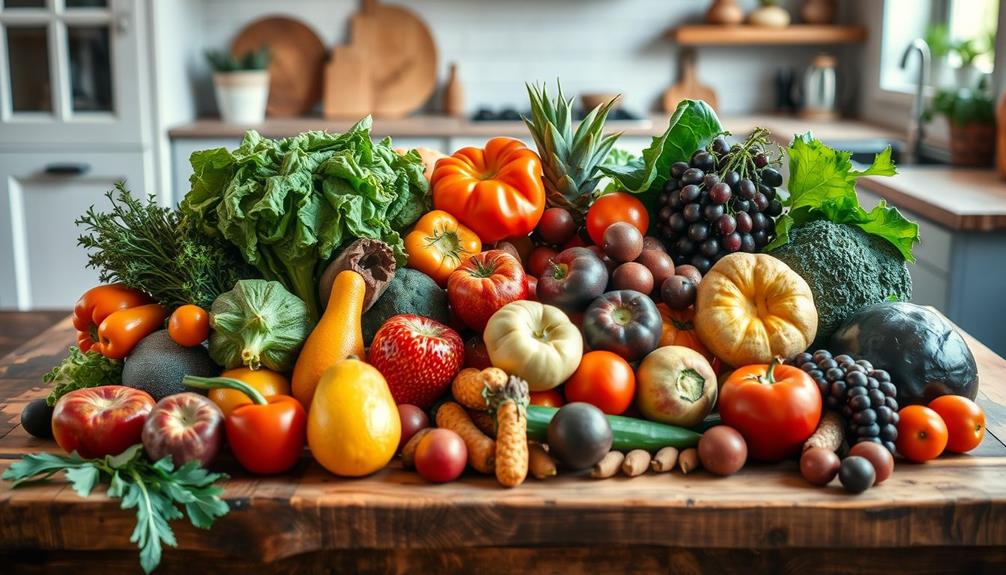
Steering through the opinions of experts on raw diets reveals a spectrum of insights and cautions. Many nutritionists agree that a raw food diet can enhance your nutrient intake, especially from raw fruits and vegetables. Additionally, incorporating regular physical activity to enhance cardiovascular health can complement the benefits of a raw food diet, leading to improved overall well-being lifestyle for longevity.
However, they warn that without careful planning, you might face deficiencies in essential nutrients like vitamin B12, iron, and omega-3 fatty acids. They emphasize the importance of a balanced diet, noting that cooking decreases some nutrients while increasing the bioavailability of others, such as lycopene in tomatoes.
Concerns also arise regarding the long-term sustainability of strict raw diets. Experts point out the risks of inadequate protein intake and potential foodborne illnesses from raw animal products.
While you might experience short-term health benefits like weight loss, the long-term risks could include menstrual irregularities and nutrient imbalances.
To avoid these pitfalls, experts recommend incorporating a variety of food sources, both raw and cooked, to achieve thorough nutrition. This approach not only helps you maintain a balanced diet but also mitigates the risks associated with overly restrictive dietary practices.
Frequently Asked Questions
Is Eating Raw Food Healthier?
Eating raw food can be healthier for you, thanks to its rich vitamins, minerals, and antioxidants. It promotes better digestion and may lower your risk of chronic diseases, but be mindful of potential nutrient deficiencies. Additionally, raw food benefits include preserving the natural enzymes found in food, which can aid in nutrient absorption and overall health. However, it’s important to note that certain raw foods, such as meat and eggs, may pose a risk of foodborne illness if not properly prepared and handled. It’s crucial to practice safe food handling and to be mindful of the source and quality of raw foods to minimize these risks.
Is a Raw Food Diet Really Good for People?
Imagine a garden flourishing under the sun. A raw food diet can nourish you similarly, offering vibrant nutrients and weight loss benefits. Yet, watch for nutritional gaps; balance is key to your overall health and well-being.
What Are the Benefits of Eating Raw Whole Foods?
Eating raw whole foods boosts your energy, enhances skin health, and aids digestion. You'll enjoy higher fiber intake, lower calorie density, and increased nutrient absorption, all while reducing the risk of chronic diseases.
What Are the Healthiest Foods to Eat Raw?
When you consider the healthiest foods to eat raw, think leafy greens, vibrant fruits, nutrient-packed nuts and seeds, cruciferous vegetables, and sprouted grains. These options are rich in essential nutrients and support your overall health.
Conclusion
In summary, embracing a raw food diet can release a whirlwind of health benefits, from increased energy to improved digestion. While it's essential to be aware of potential nutritional gaps and food safety risks, the rewards often outweigh the challenges. If you're looking to supercharge your well-being, diving into the world of raw foods could be your golden ticket. So, why not give it a shot? You might just feel like a superhero in no time!

